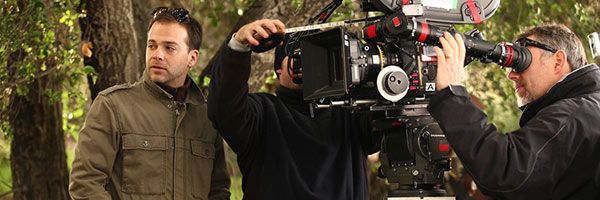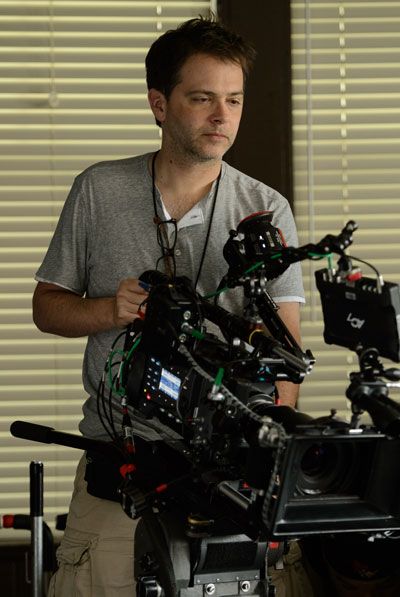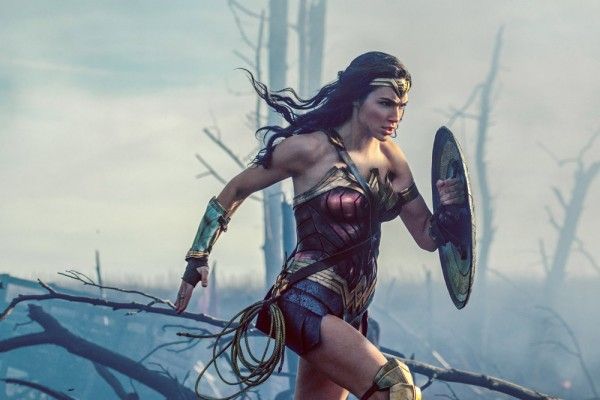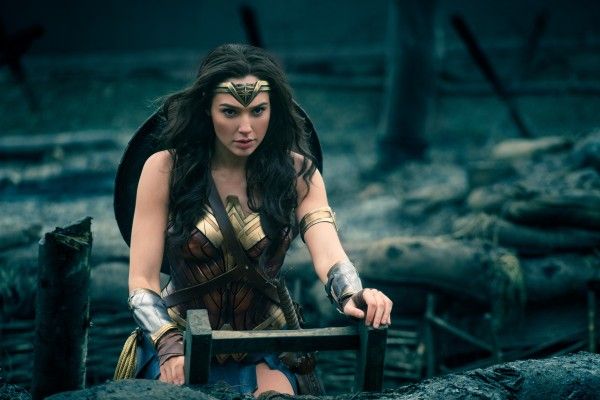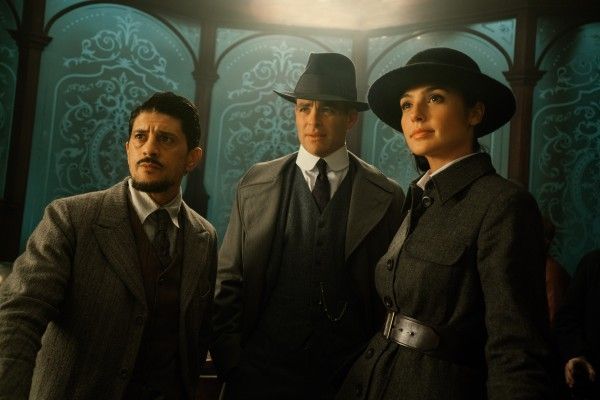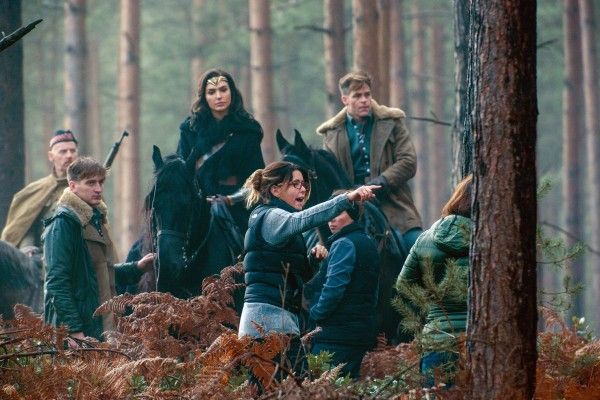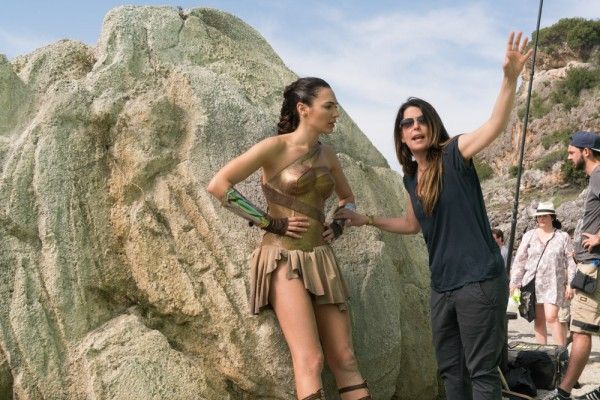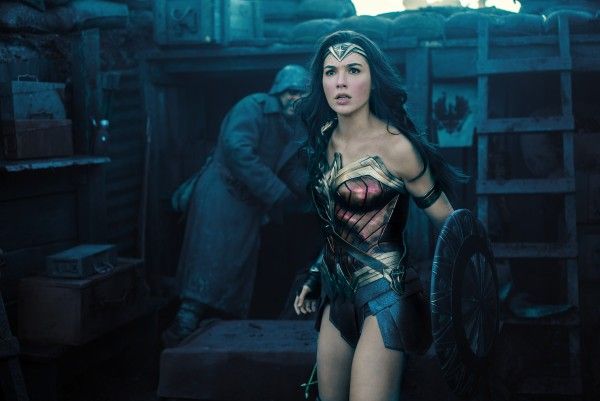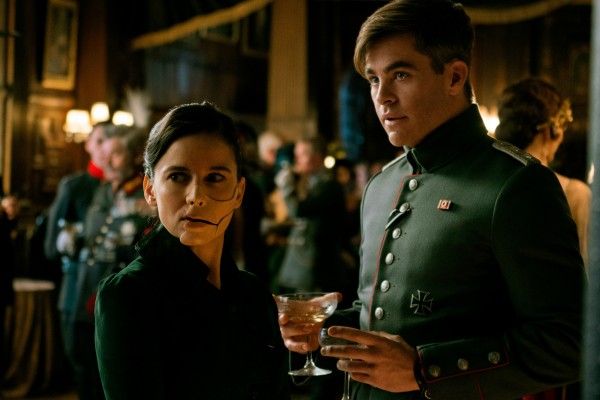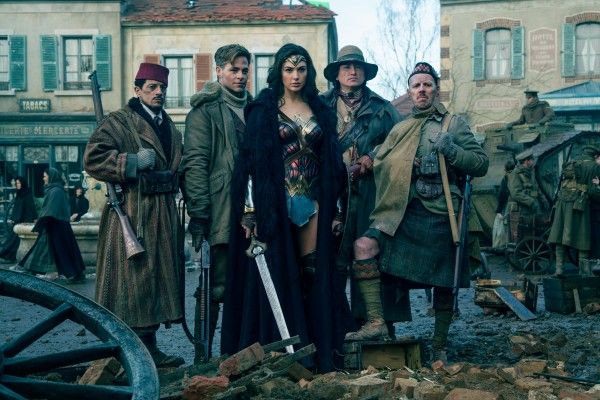While there was a palpable degree of anticipation—and anxiety—surrounding Wonder Woman ahead of its release, we now live in a post-Wonder Woman world. Director Patty Jenkins’ tremendous origin story for the titular DC Comics character is a bona fide box office phenomenon, a critical darling, and a touchstone for women both young and old everywhere. There are many reasons why this movie works as well as it does—from the performances to Jenkins’ assured direction—but one of the ways it stands out in the DC Extended Universe is its uniquely colorful palette and strong visual point of view. So when I got the chance to speak on the phone with the film’s cinematographer Matt Jensen, I jumped at the opportunity to find out how the movie came together visually.
Jensen’s resume is filled with diverse work on TV shows like Game of Thrones and True Blood as well as films like Chronicle and Filth. This isn’t even his first time shooting a superhero movie, as he also served as the cinematographer on Fantastic Four. But Wonder Woman offered its own set of unique challenges, and Jensen was more than happy to share how he and Jenkins navigated the waters.
During our chat, Jensen discussed how his early conversations with Jenkins focused on crafting a colorful and modern take on the superhero, how he and Jenkins went about putting the audience inside Diana’s viewpoint, how they balanced telling a realistic World War I story with a fantastical superhero protagonist, and whether Jensen felt pressure to make Wonder Woman fit with Zack Snyder’s DCEU movies. We also extensively discussed the making of the No Man’s Land sequence, as Jensen revealed exactly which portions of this sequence were captured during additional photography, and we touched briefly on his time on Fantastic Four and Josh Trank’s initial vision for that film.
It’s an interesting discussion about how one of the biggest films of the year came to life, and Jensen has great insight into the collaborative process between him and Patty Jenkins. Check out the full interview below.
I’ve seen the movie twice now and it’s magnificent. Seeing all of this positive response, how does it feel on your end?
MATT JENSEN: Well I’m thrilled by the response and overwhelmed as well. I just can’t get over how the movie is connecting emotionally to people and that seems to be a real topic of conversation. I think it’s one thing to do well, quite another thing to get good reviews, but then to also get the feedback that it’s really affecting people is just extraordinary. So I couldn’t be happier.
I’m curious, from your perspective, what were your early conversations with Patty like? What were the big ideas you wanted to get across?
JENSEN: Well we had always talked about making a movie that was modern in its techniques, modern in its use of color, and she always from the very beginning wanted a colorful movie. Those were kind of the big driving ideas, because it was a period movie but we didn’t want it to feel period necessarily. We wanted the pieces of period to look correct, but we didn’t want it to feel desaturated and blown out and sort of gauzy like you might shoot a period World War I movie. So we wanted something cleaner and sharper and took advantage of all the latest engineering in terms of how to move the camera. She also talked a lot about movement. She really always wanted to be in Diana’s headspace and for the viewer to experience what she was experiencing. So that’s an interesting trick when you’re dealing with a superhero, you know somebody with superhuman abilities. So and yet we also felt at the same time that we were kind of making a classic adventure movie and not necessarily purely a superhero movie. We talked a lot about Raiders of the Lost Ark, we talked about Casablanca, and I certainly grew up with a lot of the Warner Bros. adventure movies with Errol Flynn, so I think those kind of entered into my consciousness as well. It was a trick finding the right balance between all those influences. You know you kind of put them in a blender and see what happens.
Well Diana’s point of view is one of the things that I found most striking. It makes a difference, you feel like you are seeing this through a distinctly feminie viewpoint. I know point of view is tough to pull off, but you hit that balance perfectly. What was your approach to that on set?
JENSEN: Yeah, you know it’s hard to pinpoint something exactly, but I think a big thing was we wanted to see what she was seeing to emphasize Man’s world as being kind of hideous and ridiculous. We felt as long as the camera kind of moves with Diana and was in rhythm with her and you were entering Man’s world from her point of view—for example the scene where she first arrives in London, we really wanted steadicam POV shots that were searching and looking at everything that was modern, and the way the couples interacted and held hands. We felt like as long as we were moving with Diana and cutting to her reaction, that would create an empathy, a simpatico with what she was going through.”
Well you guys nailed it completely. I also wanted to talk about the No Man’s Land sequence, which is not only the best scene in the movie, I think it’s an iconic scene that’s gonna be a major touchstone for years and years to come. How did that scene come about visually?
JENSEN: It was always one of the major sequences that was causing us the most concern and we put the most work inot. I think it was one of the earliest pre-vis meetings I had when I got onboard the film. The visual effects team had been working on it with Patty for a couple of weeks and I was brought in to help and make suggestions, so we were meeting quite often to really sketch that sequence out and it kept evolving and evolving. I think the big thing that Patty and I talked about was other superhero origin movies had done this very effectively where the alter ego is not revealed until kind of mid-way through the movie, and it creates this tension, this sense of anticipation because you’re waiting for the hero to do something, to emerge. So we knew we could do that if we could create tension and we could create a sense of anticipation, so we were trying to kind of funnel all of that into that moment so that when she finally emerges as Wonder Woman for the first time, that there was this tremendous build-up and then there was a release. So we really worked to get those shots correct and right from the moment that Steve tells her, “This is not what we were here to do,” from that moment on to when she emerges from the trench, Patty, the storyboard artists, pre-vis artists, and me we all contributed to the shot design to reveal her in that moment.
I also know that sequence was reshot, or portions of it were, and I think this is proof positive that reshoots do not equate trouble or problems because it worked out for the better. What did you capture in those reshoots that brought it home?
JENSEN: Well actually for No Man’s Land really nothing was reshot. We shot pieces of that sequence all the way through the whole production just because it was technically complicated, we couldn’t achieve everything on our backlot set. But the one scene that we did during the additional photography was the scene just prior to it where she had seen the horses in the mud and a guy missing his leg and calling out for his mother and she’s like “Why can’t we help these people?” and they’re saying “Move on! We gotta move on!” That was all Patty’s idea and it came I think in the edit. She had had that scene in the script earlier but because of the schedule and logistics we pulled it out, and then she felt in editing she needed it back to do the exact same thing that I was talking about which is to notch up the tension, to just have another scene where she’s being told “Don’t do this. Don’t do this. Don’t help.” To sort of ignore her instincts to be of service, and we wanted to suggest that they were getting closer and closer to the front and it was getting louder and more chaotic and horrific.
That’s interesting because I feel like that buildup is really essential to the release that you get. Because the audience is like “Here we go, here’s where Diana learns the realities of war,” but she’s like “Nope” and she gets up and gets out there.
JENSEN: Yeah.
Another thing I found striking about that sequence is that in more traditional set pieces like this you hone in on one or two “bad guys” on the other side to telegraph to the audience that the hero needs to kill or overcome these obstacles to get across. But this scene is all about Diana and it’s almost as if the Germans don’t matter, it’s what she’s doing that matters, and I felt that shot choice really reinforced her becoming Wonder Woman in that scene.
JENSEN: Yeah. Yeah. I mean you nailed it. I don’t have anything to add. (laughs)
I could talk about this scene forever, but I was also curious, you’re not just making Wonder Woman, but also a movie set in the DC Extended Universe. Warner Bros. is clearly giving filmmakers room to make these films their own, but were you conscious of the fact that this movie should also aesthetically fit into that library of movies? Were there any discussions about sticking to the established DCEU aesthetic?
JENSEN: If those conversations happened I was never privy to them. From the beginning Patty emphasized that we were making our movie, and I felt nothing but support from Warner Bros. as far as that went, so we just kind of did our own thing. I think I was concerned, because I have such enormous respect for Zack and his work with some great DPs Amir and Larry and now with Fabian, I just think he’s such a strong visual artist and I’m just a huge, huge fan of the Nolan Dark Knight movies, so I didn’t want to stray too far but I knew that we were making our own. I think aesthetically everything kind of lines up. Patty wanted a colorful movie and I felt that I could bring color and texture and also have the contrast and the heavy emphasis on naturalism that I think is prominent in Nolan’s work.
You’re also tackling a World War I story, and I think the film really succeeds in realistically depicting war, but how did you balance that aspect with the more fantastical superhero aspects of the story especially as you get into the third act?
JENSEN: Yeah, well I think that’s always the trick and we talked about it a lot, about the superhero aspect of it. We wanted to make sure that she felt a part of the world and that it wasn’t as if you took a superhero and plopped her into a World War I movie. So I think a lot of the aesthetic choices about the use of color and some of our shooting techniques helped with all of that. But look, it’s always a fine line you’re walking with these kinds of movies. It’s hard to articulate exactly how we did it, but I know it was on our minds.
This also wasn’t your first time working in the superhero realm, as you also shot Fantastic Four. I know that film had some problems, but did you take anything from that experience that informed your approach to Wonder Woman, either positive or negative?
JENSEN: You know I’ve been making movies and TV shows for a long time, so I think that my approach is always the same in that I’m always trying to do the story and the scripts and the director justice. I’m trying to keep what they want and I’m also trying to tell that particular story, so the way I go about these things in terms of my craft and my discipline is similar and I’ve had it for a long time. You know from True Blood to Game of Thrones to Chronicle to Fantastic Four to Wonder Woman I’m very comfortable working with visual effects, I’m very comfortable working with stunts, I do know the questions to ask and what to be prepared for in general. But every thing that you do is different. Every director is different, every VFX team is different, every stunt team is different, so they all have different concerns, a different way they approach things, so I have to be very flexible. There’s always something that surprises me and we do something in a completely new manner on every movie, and it can be something very subtle like the VFX guys want their greenscreen underexposed to stop or they want it directly at key, and that affects of course my lighting, to something like we’re gonna do this crazy wire rig and it’s gonna run for four miles and we want the camera to follow the entire way, it’s always something new.
I do think there are aspects of that movie that work pretty well, like the body horror stuff. What was your initial visual approach to Fantastic Four?
JENSEN: Well that film I think, you know, we were trying to not have a lot of movement. Josh did really see it like a David Cronenberg or a Stanley Kubrick movie in a lot of ways. So we were trying to put heavy emphasis on static camera frames and big wide shots and wide angle lenses kind of close to faces and not a lot of movement, so it’s very different than Wonder Woman which was very poetic. It’s a road movie essentially so Diana’s traveling from Point A to Point B so the camera’s always kind of flowing with her.
I know No Man’s Land was particularly challenging, but was there another scene or shot that was a huge challenge that you’re really happy with?
JENSEN: Well honestly every day we had our challenges. I’ll tell you one thing that was really tricky is getting a close-up of Gal riding a horse. You’d think they’ve been making Westerns and things for so long that you would think there’d be a good way to do this (laughs). We shot one day with Gal on a mechanical horse and we were in a big tracking vehicle and the camera’s on the crane and we were trying to get a close-up of her and it just never looked right. So we ended up having to figure out other ways to do it, which we did and we have some great results in the movie. But that was something I did not expect. Of all the major set pieces and everything like, “Oh it’s a close-up on our talent riding a horse, how hard can that be?” but it’s proven to be one of the trickiest things that we did.

